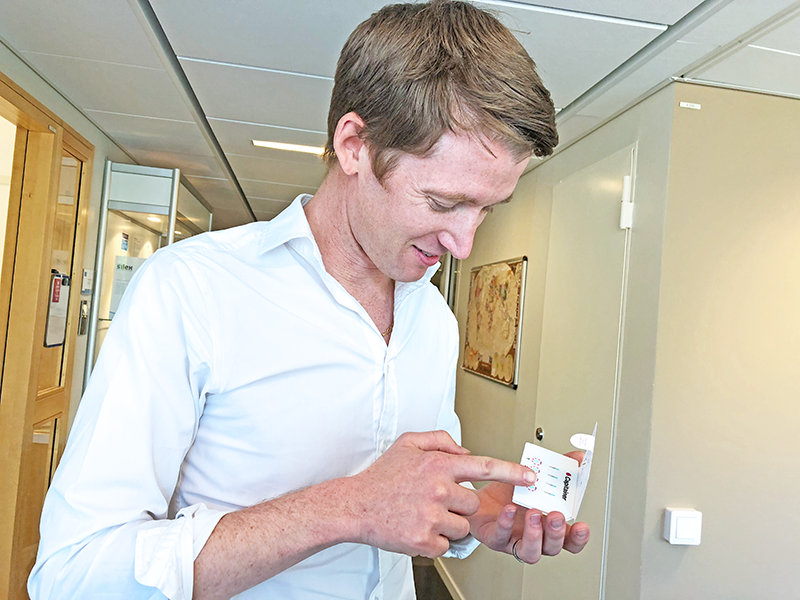Blood tests – wherever you are
Frequent trips to the doctor could soon be a distant memory for people who require regular blood tests. We checked in with KTH Innovation alumni Capitainer that just registered the CE mark for their first product, a Dried Blood Spot sampling device which enables patients to conduct their own blood tests at home.

A person that has gone through a transplant will need a lifetime of immunosuppressive medication to prevent their body from rejecting the new organ. This means regular blood tests to monitor the situation, tests that today have to be carried out by a doctor or nurse either at a local healthcare centre or during a home visit. Although some products for home-testing exist on the market today, the amount of blood collected is undefined, which limits the accuracy of the analysis.
The combination of these issues made Olof Beck at the pharmacological laboratory at Karolinska hospital start thinking of alternative solutions. In 2012, he teamed up with Niclas Roxhed, Associate Professor at Department of Micro And Nanosystems at KTH, who had at the time already done extensive research on microsystem technology. Now, six years later, the team has grown to six people, and the product, a device that collects an exact amount of blood and enables detailed analysis, is on the verge of reaching the market. Using the card, the patient can conduct their own blood tests, and then simply send the card to the doctor for analysis.
On a global journey
In 2016, the Capitainer team joined the KTH Innovation Brighter Program, which brought them to Silicon Valley and into the heart of organizations like Google, NASA and Stanford. Gabriel Lenk, PhD student at Micro and Nanosystems at KTH, and CTO and co-founder of Capitainer team, says:
- The program is a mix of motivation, inspiration and coaching. It was a unique opportunity to get in contact with the startup ecosystem in Silicon Valley, to meet the people working there and to hear their stories. I am still in contact with some of the people I met during the program.
Gabriel Lenk remembers the final pitch night at the Prezi headquarters as one of the highlights of the Program. After fierce competition in front of an experienced jury, Capitainer was crowned the winner!
Entering the international market
Now, after having registered the CE mark for the first product, Capitainer B, Capitainer can start selling the device in Europe. Right now, they are working with several private labs and research groups that want to implement routine blood sample collection on the Capitainer B cards into their operations. Gabriel Lenk says:
- The next goal is to gain sales in Europe but also strive for registration of Capitainer B with the FDA so we can market the device in the USA. In parallel, we are developing the next generation of blood collection device for onchip plasma extraction, something that is highly relevant for pharmaceutical companies and the development of new drugs. We expect to have prototypes ready during the summer.
Is your startup ready to go global? Apply to the Brighter Program today!

